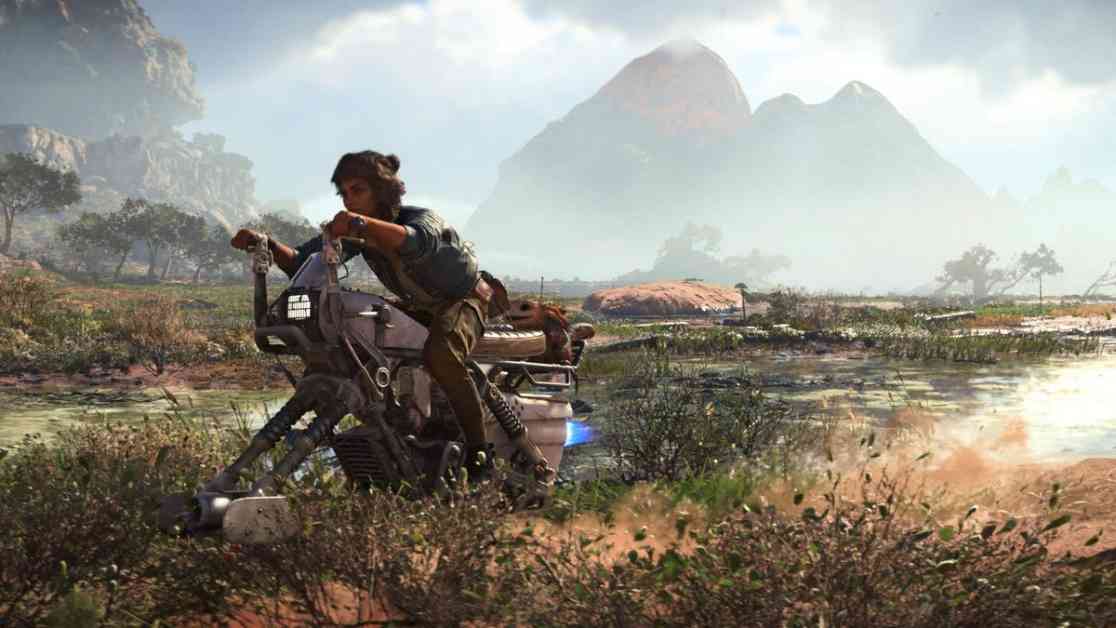I was immersed in the world of Star Wars Outlaws, a massive RPG developed by Ubisoft that had me on a mission to infiltrate an Empire base. As I navigated through the game, I couldn’t help but be captivated by the attention to detail in the environment. From the dark gray cladding to the utilitarian-gray panels covered in blinking lights, every aspect of the game’s design was meticulously crafted to capture the late-70s sci-fi aesthetic.
Immersive Environments
One particular wall in the game caught my eye, standing out as a perfect example of the level of detail put into creating the game world. It was a simple wall in a vast hangar filled with TIE Fighters, Stormtroopers, and other elements that brought the Star Wars universe to life. Despite its seemingly mundane appearance, the wall symbolized the incredible amount of work and dedication that went into every aspect of the game’s design.
As I marveled at the intricacies of the wall, I couldn’t help but feel a sense of awe at the sheer scope of Ubisoft’s achievement. The game world was vast and expansive, with each location meticulously designed to immerse players in the Star Wars universe. From the smallest details like a faded sign with a yellow arrow to the grandeur of a bustling city, every element was carefully crafted to create a truly immersive experience.
The Dichotomy of AAA Games
However, as I delved deeper into the game, I began to notice a stark contrast between the awe-inspiring beauty of the world and the frustrating issues that plagued the gameplay. Despite the incredible attention to detail in the environments, the AI often malfunctioned, leading to repeated restarts and moments of sheer frustration.
This dissonance between the game’s artistic brilliance and its technical shortcomings left me questioning the standards by which we judge AAA games. How can we overlook the monumental effort that goes into creating a game like Star Wars Outlaws and reduce it to a mere numerical rating? The game’s vast scale and meticulous design deserve to be acknowledged and appreciated on a deeper level.
The Artistry of Game Development
Ubisoft’s ability to create intricate worlds like those in the Assassin’s Creed series is a testament to the artistry of game development. From recreating ancient Greece with stunning authenticity to crafting entire cities with meticulous detail, the level of craftsmanship in their games is truly remarkable.
However, it’s disheartening to see these incredible digital spaces go to waste after a single game. The potential for these environments to be reused and repurposed for other experiences is immense, yet they often remain confined to a single game, plagued by technical issues and gameplay limitations.
As I reflected on the artistry and creativity that went into creating games like Star Wars Outlaws, I couldn’t help but feel a sense of frustration at the missed opportunities and untapped potential of these virtual worlds. The scope of what is achievable in modern game development is nothing short of astounding, yet it is often overshadowed by technical issues and gameplay shortcomings.
In conclusion, the dichotomy of AAA games like Star Wars Outlaws highlights the need for a reevaluation of priorities in game development. While the technical achievements are undeniably impressive, they must be balanced with a focus on addressing fundamental issues and improving the overall player experience. Only then can we fully appreciate the artistry and creativity that goes into creating these virtual worlds.
















